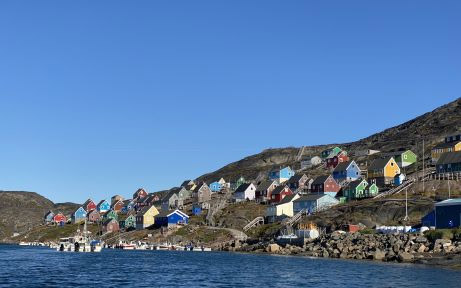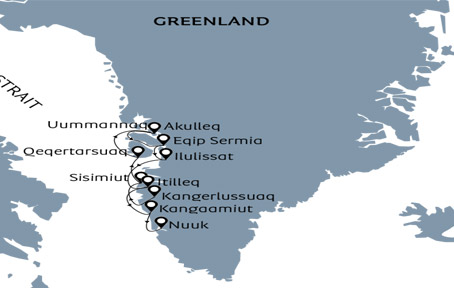
Expert guidance for your cruise vacation!
Let us connect you with our cruise expert to help you to plan the best vacation at the lowest possible price. For fastest service, call us at +91 9920688575
Ocean Voyage: Ishigaki - Bali
Cruise Line: Ponant Cruises
Ship: Le-Jacques-Cartier
Sailing Dates: Apr 21 2026
Port: Ishigaki - Benoa, Bali
Ocean Voyage: Ishigaki - Bali
Ports of Call & Excursions

Day 1 - Ishigaki
Located to the south of the main island of the Yaeyama archipelago, Ishigaki boasts all the aspects of an authentic piece of paradise. You have guessed it, you do not come here for its skyscrapers but for its pure emerald waters and idyllic beaches. The waters off Shiraho, on the island's south-west coast, have one of the largest areas of blue coral in the world.

Day 2 - 9 - At sea
During your journey at sea, make the most of the many services and activities on board. Treat yourself to a moment of relaxation in the spa or stay in shape in the fitness centre. Depending on the season, let yourself be tempted by the swimming pool or a spot of sunbathing. This journey without a port of call will also be an opportunity to enjoy the conferences or shows proposed on board, depending on the activities offered, or to do some shopping in the boutique or to meet the PONANT photographers in their dedicated space. As for lovers of the open sea, they will be able to visit the shipâs upper deck to admire the spectacle of the waves and perhaps be lucky enough to observe marine species. A truly enchanted interlude, combining comfort, rest and entertainment.

Day 10 - Benoa, Bali
If it's a taste of exotic authenticity you're after, prepare to be spell-bound by the island of Bali, tucked away in the heart of the Indonesian archipelago. The beauty and diversity of its landscapes, the depth and richness of its cultural heritage and the plethora of activities on offer here make Bali a little slice of heaven on Earth. The island's southern coast enthrals with its white sand beaches, its picturesque little fishing villages such as Benoa, and its hills patchworked with terraced rice paddies further inland. Nicknamed 'the Island of Gods' for its sumptuous temples, Bali is the beating heart of Indonesian Hinduism.
Volcanic islands and historic cities of the North Atlantic
Cruise Line: Ponant Cruises
Ship: L-Austral| Le-Champlain | Le-Bellot
Sailing Dates: Apr 28 2026
Port: Las Palmas de Gran Canaria, Canary Islands - Lisbon
Volcanic islands and historic cities of the North Atlantic
Ports of Call & Excursions

Day 1 - Las Palmas de Gran Canaria, Canary Islands
A stopover of sunny climes, Las Palmas is located on the north-east coast of Gran Canaria. A few streets away from Puerto de la Luz port, youâll discover the vast Las Canteras beach, bordered with the townâs characteristic palms. Youâll find these palms are all over Las Palmas, in the streets and squares, especially on the plaza de Santa Ana in the heart of the historical district. It feels like youâve travelled back in time here, as you stand looking at the tall houses beside the Santa Ana cathedral. Very close by, you can visit the Casa de Colón, a museum dedicated to the famous explorer. The museum is housed in the palace belonging to the islandâs former governor. Chances are, youâll be drawn to the covered Vegueta market to partake in some daily life along with the locals and taste some unfamiliar dishes.

Day 2 - Santa Cruz de Tenerife, Canary Islands
The capital city of Tenerife is located on the north-east coast of the island. Close to the port is the monumental Plaza de España, bedecked with a fountain and plant sculptures. Around the plaza, you can admire the white marble Triunfo de la Candelaria obelisk, the historic casino of Santa Cruz and the majestic Guimerà theatre. Not far from here, the picturesque Iglesia de la Concepción church features the characteristic traits of Canaries architecture.

Day 3 - San Sebastian de la Gomera, Canary Islands
La Gomera rises from the water like a mirage. This volcanic island in the Canaries features jagged cliffs, valleys covered in palm trees, and beaches of black sand bathing in crystal-clear waters. But its greatest treasure lies at its heart: an exceptional laurisilva, a laurel forest whose prehistoric vegetation has been preserved thanks to the microclimate on the island. This unique ecosystem, common a few million years ago in the tropics, forms the Garajonay National Park, listed as a UNESCO World Heritage Site. Like the birds, the Guanches contribute to the poetry of the island too, with their whistled language called Silbo. This magical-sounding, melodious language is also listed as World Heritage by UNESCO.

Day 4 - Santa Cruz de La Palma, Canary Islands
The capital of the island of Palma, Santa Cruz de la Palma is the pearl of the Canaries. Founded in 1493 by the conquistador Alonso Fernandez de Lugo, the city has preserved a large and atypical architectural heritage from its colonial past, with its traditional Canarian houses adorned with brightly coloured wooden balconies, its cobbled streets, its sumptuous palaces and its numerous religious buildings. The Santa Catalina Castle is the symbol of the city. This 16th century military fortification helped defend the city from repeated attacks by French privateers.

Day 5Â Â - 6 - Funchal, Madeira
This attractive capital of Madeira is located on the southern coast of the island. The walkways of the old town are lined with azulejos, or multi-coloured mosaics. If you follow these patterns, theyâll lead you to the appetising Mercado dos Lavradores market stands, the Frederico de Freitas museum, and the golden panelling of the Cathedral de la Sé. Along the waterfront, the palm tree-shaded promenade leads you to the teleféricos de Monte, Madeira's cable cars. Its panoramic cabins transport you over the city to top of Monte, where you can see the picturesque botanical garden.

Day 7 - At sea
During your journey at sea, make the most of the many services and activities on board. Treat yourself to a moment of relaxation in the spa or stay in shape in the fitness centre. Depending on the season, let yourself be tempted by the swimming pool or a spot of sunbathing. This journey without a port of call will also be an opportunity to enjoy the conferences or shows proposed on board, depending on the activities offered, or to do some shopping in the boutique or to meet the PONANT photographers in their dedicated space. As for lovers of the open sea, they will be able to visit the shipâs upper deck to admire the spectacle of the waves and perhaps be lucky enough to observe marine species. A truly enchanted interlude, combining comfort, rest and entertainment.

Day 8 - Lagos
There stands a natural paradise called Lagos, bordered by the Atlantic Ocean, in the Algarve region of southern Portugal. With its picturesque and age-old town centre, and the Ponta da Piedade natural site sheltering paradisiacal beaches protected by captivating limestone cliffs in hues of ochre, Lagos enthrals, fascinates and enchants. In this interesting blend between nature and culture, do not miss the chance to stroll along the small paved streets of its historic centre, surrounded by impressive Moorish ramparts and edged with traditional white houses, with decorations sculpted in the stone. In particular, you will be able to admire the Manuelian-style Governor's Castle, the 17th-century Ponta da Bandeira Fort or the Church of Santo António in Baroque architecture.

Day 9 - Setubal
A few kilometres south of Lisbon, Setúbal, one of Portugal's most important fishing ports, enjoys an exceptional geographical location. The city is surrounded by vast parks and nature reserves that protect the biodiversity of the Sado estuary and the Arrábida serra. Don't miss the possibility to discover the magnificent wild and unspoilt expanses that border the peninsula and the estuary, whose waters are home to many dolphins, which can easily be observed.

Day 10Â Â - 11 - Lisbon
Portugalâs capital city located on the banks of the Tagus, only a few kilometres from the Atlantic coast, is a city of exceptionally rich cultural diversity. At the mouth of the river harbour, impose two UNESCO World Heritage monuments, Jeronimos monastery and Belem tower. The Alfama hillside is also worth visiting: known for its fado bars and its Moorish streets, this district is the oldest one of the city and one of the most typical. Not far from there, Chiadoâs elegant streets are home to big fashion labels and are an invitation to a bit of of luxury shopping.
8 Days - Scenic Alaska [Vancouver to Juneau]
Cruise Line: Windstar Cruise
Ship: Star Seeker
Sailing Dates: May 07 2026 | May 15 2026 | Jul 04 2026 | Jul 11 2026 | Aug 07 2026 | Aug 15 2026
Port: Vancouver to Juneau
8 Days - Scenic Alaska [Vancouver to Juneau]
8 Days - Scenic Alaska [Juneau to Vancouver]
Cruise Line: Windstar Cruise
Ship: Star Seeker
Sailing Dates: May 07 2026 | May 15 2026 | Jul 04 2026 | Jul 11 2026 | Aug 07 2026 | Aug 15 2026
Port: Juneau to Vancouver
8 Days - Scenic Alaska [Juneau to Vancouver]
7 Days - Scenic Alaska [Juneau to Vancouver]
Cruise Line: Windstar Cruise
Ship: Star Seeker
Sailing Dates: May 07 2026 | May 15 2026 | Jul 04 2026 | Jul 11 2026 | Aug 07 2026 | Aug 15 2026
Port: Juneau to Vancouver
7 Days - Scenic Alaska [Juneau to Vancouver]
10 Days - Alaskan Splendors [Seward [Anchorage] to Vancouver]
Cruise Line: Windstar Cruise
Ship: Star Seeker
Sailing Dates: May 23 2026 | Jun 02 2026 | Jun 12 2026 | Jun 24 2026 | Jul 18 2026 | Jul 28 2026 | Aug 22 2026
Port: Seward [Anchorage] to Vancouver
10 Days - Alaskan Splendors [Seward [Anchorage] to Vancouver]
10 Days - Alaskan Splendors [Vancouver to Seward (Anchorage)]
Cruise Line: Windstar Cruise
Ship: Star Seeker
Sailing Dates: May 23 2026 | Jun 02 2026 | Jun 12 2026 | Jun 24 2026 | Jul 18 2026 | Jul 28 2026 | Aug 22 2026
Port: Vancouver to Seward [Anchorage]
10 Days - Alaskan Splendors [Vancouver to Seward (Anchorage)]
11 Days - Alaskan Splendors [Vancouver to Seward (Anchorage)]
Cruise Line: Windstar Cruise
Ship: Star Seeker
Sailing Dates: May 23 2026 | Jun 02 2026 | Jun 12 2026 | Jun 24 2026 | Jul 18 2026 | Jul 28 2026 | Aug 22 2026
Port: Vancouver to Seward (Anchorage)
11 Days - Alaskan Splendors [Vancouver to Seward (Anchorage)]
Odyssey in the heart of Japan's subtropical islands[Osaka - Keelung]
Cruise Line: Ponant Cruises
Ship: Le-Jacques-Cartier
Sailing Dates: May 31 2026
Port: Osaka - Keelung (Chilung)
Odyssey in the heart of Japan's subtropical islands[Osaka - Keelung]
Ports of Call & Excursions

Day 1 - Osaka
Like its big sister Tokyo, Osaka is the product of ancestral traditions and amazing technological innovations. And despite its size, its location on the Pacific Ocean give it a sense of serenity. The main historic landmark is the 16th century Osaka Castle, which stands proud in the midst of majestic skyscrapers. The lively streets of Dotomburi and the bizarre Shinsekai district attract thousands of locals and visitors. A multitude of restaurants offer menus full of regional specialities: takoyaki, made with octopus, and other succulent dishes such as kushikatsu kebabs.

Day 2 - Shingu
To the south-west of the Japanese archipelago, Shingu is a port town in the Kansai region. Founded in 1933, it belongs to the peninsula of Kii, the countryï¾s largest. Take a trip around the Kumano Sanzan religious complex dedicated to three sacred mountains and home to two Shinto temples, Kumano Hong? Taisha and Kumano Hayatama Taisha.ï¾ The latter features the famous sacred nagi tree, said to have been planted around 1159. Pilgrims flock to these two sanctuaries that feature on UNESCO's World Heritage list. Hop on a boat and journey to the Dorokyo Gorge, a natural beauty spot carved out by the emerald waters of the Kumano river.

Day 3 - Kochi
The fourth largest island in the Nippon archipelago, Shikoku, is also the best preserved. Here, forests and oceans stretch as far as the eye can see. On the southern coast of the island, Kochi, the tranquil metropolis will quietly welcome you. You can enjoy a lively town, with many commercial centres and restaurants. On the menu, katsuo tataki, a local speciality with delicately grilled fish. But Kochi, overlooked by the benevolent shadow of its castle, also invites you to explore its magnificent Katsurahama beach, its museums and Buddhist temples, the site of a famous annual pilgrimage.

Day 4 - Kagoshima
The seaside city of Kagoshima, at the south of Kyushu Island, ï¾ is best known for Sakurajima, an active volcano that faces Kinko Bay. A visit to this busy metropolis will remind you just how much the volcano is part of the inhabitants' everyday life: in the wake of the almost daily eruptions, a delicate layer of ash settles on everything. The top of a buried torii (traditional Japanese gate) measuring three metres that was 'swallowed up' by a giant lava flow in 1914 can still be seen. The power of nature will send a shiver down your spine.

Day 5 - Miyanoura, Yakushima
Yakushima is a striking island in the South of Japan, covered in forest and listed as a UNESCO World Heritage Site. Hikers are very fond of this destination because of the lush vegetation, Mount Miyanoura, the waterfalls and cascades. But without a doubt, the symbol of the island remains its many age-old cedar trees which is said to have inspired some of the scenes in the animated film Princess Mononoke. On this island, you will also find wildlife including the Japanese macaque, the sika deer, and green sea turtles which lay their eggs on the magnificent sandy beaches here.

Day 6 - Motobu, Okinawa
To the north of the island of Okinawa, lying between the azure ocean and lush hills, Motobu inspires contemplation. This Japanese paradise, far off the beaten track, unveils landscapes steeped in poetry. A setting of pristine nature, with Mount Yae as a backdrop, Motobu reveals itself through its white sandy forests and its wild and preserved Yambaru forest, home to a rare wealth of fauna and flora. The hiking paths invite you to explore this incomparable nature, where every step reveals breathtaking panoramas and age-old legends.

Day 7 - Naha, Okinawa
Capital of Okinawa Prefecture, the town of Naha is located on the south-west of the island. You will love its lively atmosphere, particularly along Kokusai Dori, otherwise known as 'international street'. The picturesque Makishi Public Market, nicknamed 'Naha's kitchen' offers a profusion of colourful fish, Okinawan foodstuffs and local spices and you can sample delicacies cooked on the spot.

Day 8 - Miyakojima
Situated between the East China Sea and the Philippine Sea, Miyakojima is the main island of the Miyako Islands, in the Sakishima archipelago. The fourth largest island in the Okinawa prefecture, it is known for its many sugar cane plantations and some of Japanâs most beautiful beaches. Myriad multicoloured fish await you during unforgettable swims and snorkelling.

Day 9 - Ishigaki
Located to the south of the main island of the Yaeyama archipelago, Ishigaki boasts all the aspects of an authentic piece of paradise. You have guessed it, you do not come here for its skyscrapers but for its pure emerald waters and idyllic beaches. The waters off Shiraho, on the island's south-west coast, have one of the largest areas of blue coral in the world.

Day 10 - Keelung (Chilung)
On the north-east tip of Taiwan, the harbour city of Keelung stands on one of the most beautiful coasts on the island. Nearby is the spectacular natural park of Yehliu, famed for its striking rock formations. It's easy to tour the city's historical sites on trails that cross the lush green hills surrounding the harbour from Chung Cheng Park to Fort Ershawan, you can enjoy superb views of Keelung and the coastline. But the main attraction is the Miaokou night market, where you can taste some typically Taiwanese culinary delights.
Complete West Greenland
Cruise Line: Albatros Cruises
Ship: Ocean Albatros
Sailing Dates: Sep 05 2026
Port: Kangerlussuaq, Greenland to Nuuk, Greenland
Complete West Greenland
Day 1
Kangerlussuaq, Greenland
On the first day of our expedition, we arrive in Kangerlussuaq on the west coast of Greenland, the hub for travel in this vast island.
Situated at the head of a 160km long fjord of the same name, Kangerlussuaq is Greenland's only inland town, and was established as Sondrestrom Air Base/Bluie West-8 by American troops in 1941. Existing largely to service the airport, the town of Kangerlussuaq itself retains a strong 'Cold War' feeling, hinting at its extensive American military use before it was signed over to the Greenlandic Government in 1992. Today Kangerlussuaq is Greenland's largest air hub, with flights arriving daily from Denmark and around the country. It's stable climate and lack of fog makes it ideal as an airport, but it exhibits some of the most varied temperatures in the country, commonly registering the highest summer and lowest winter temperatures due to its inland location.
Upon arrival in Kangerlussuaq, you will be transported to the small port located west of the airport, where the Ocean Albatros awaits at anchor. Zodiacs will transfer us the short distance to the ship, where you will be checked in to your stateroom. After the mandatory safety drill, enjoy dinner and a glass of champagne as we set sail a course for adventure through the 160-kilometre Kangerlussuaq fjord.
Day 2
Sisimiut, Greenland's Second City
After breakfast, Ocean Albatros will arrive in the colourful city of Sisimiut. With around 5,400 inhabitants, it is Greenlandâs second largest city, and one of the most interesting to explore. Paleo-Inuit people have lived around Sisimiut on and off since 2,500 BC, arriving in waves of migration from Arctic Canada. Remnants of turf huts and tent camps from this time can be found thorughout the vast back country which surrounds Sisimiut, including on Tele Island, a short pleasant walk from the harbour.
In 1756, Count Johan Ludvig Holstein established a colony here and called it âHolsteinsborgâ. The oldest part of Sisimiut features town houses from this era, and the oldest dates back to 1756. One of the most culturally significant buildings is the Blue Church, built in 1775, now a landmark in the cityâs historical museum district, arguably the best preserved in Greenland, and the perfect place to discover the Greenland of old.
Nowadays, Sisimiut is an important hub of education and industry, and local factories process the bulk of fish caught in the country (Greenlandâs largest export). The fish processing plant in the harbour is one of the largest in Greenland, and among the most modern in the world. Just beyond the harbour sits the headquarters of KNI, the government-operated company which resupplies the many small settlements throughout Greenland - a vital service in a country with so many remote communties.
The busy city centre of Sisimiut offers a glimpse of what daily life is like in 21st-century Greenland, where seal hunts and smartphones collide. Take a refreshing stroll around Spedjesø and take in an exhibition at the city's cultural centre Taseralik, explore the region's fascinating heritage at the city museum, or visit the Artists Workshop, where savvy shoppers can purchase traditional artworks direct from the artist. As evening falls, we will leave Sisimiut and set a course for the iceberg studded waters of Disko Bay (Qeqertarsuup Tunua) as Ocean Albatros sails for Qeqertarsuaq.
Day 3
Qeqertarsuaq, Disko Island
Nestled below Disko Islandâs 1,000-metre mountains, we pull into port in a beautifully sheltered natural harbour. The place was aptly named Godhavn (âGood Harbourâ) in Danish, while its Greenlandic name âQeqertarsuaqâ simply means âThe Big Islandâ.
For most of Greenlandâs modern history, Godhavn was the political and economic capital of North Greenland (while GodthÃ¥b, now Nuuk, served this role in Southern Greenland). Its importance was due to the vast economic activity generated by whaling in Disko Bay, the preeminent Arctic industry since the 16th Century. As the whaling industry collapsed in the early 1900s, Godhavn lost its political status as all government functions moved south to GodthÃ¥b/Nuuk, and the town was forced to reinvent itself, changing its name to Qeqertarsuaq in 1979 . Today, hunting and fishing are the main industries in Qeqertarsuaq, while tourism is becoming increasingly important. Ferries arrive in the town daily in summer from around Disko Bay, while in winter, access is only by helicopter from nearby Ilulissat.
Qeqertarsuaqâs sweeping red-and-black basalt mountains are radically different to the rolling granite hills which characterize much of Greenland, and provide a much richer soil. Despite being situated well above the Arctic Circle, this rich volcanic soil and the areaâs mild microclimate make it much more green and lush compared to the rest of the country. Locals from all over Disko Bay come to the island in summer to hunt and collect angelica, herbs and mushrooms, and the stunning rock formations and black sand beaches attract visitors from all over the world. The town itself is typically Greenlandic, with quaint multicoloured homes, a splendid museum, and the unique octagonal church nicknamed 'God's Inkpot' (built in the Norwegian stave style). With excellent hiking opportunities, friendly locals, and a fascinating place in regional history, Qeqertarsuaq has a lot to offer.
On the afternoon of our day on Disko Island, we will reposition our vessel slightly to the east and launch our fleet of Zodiacs to explore the coast of Kuannit. Kuannit means 'Angelica' in Greenlandic, referring to the herb which grows abundantly on the rich south-facing slopes of the island. This stretch of coastline is one of Greenland's best kept secrets; with lush greenery dripping with water from mountain springs, spectacularly weird basalt rock formations riddled with caves and waterfalls, and plenty of sapphire-blue icebergs, this secluded section of coast is one of the most spectacular in the Arctic.
From Kuannit, we will set a northerly course towards Uummannaq Fjord.
Day 4
Akulleq and Uummannaq Fjord
At the heart of the maze of islands and fjords north of Nuussuaq Peninsula lies Akulleq - an island whose name aptly translates as 'The Centre'. This island is a geological marvel, a slab of vivid yellow rock amid the crystal blue Arctic waters. The rock is billions of years old, although in this part of Greenland, the age is unremarkable. Understanding rocks of this age is incredibly challenging, however scientists believe that these unique rocks formed in the deep ocean floor, at a time when only single-celled life existed on planet Earth.
Akulleq offers a window into the geological past, as well as the unique ecology of this part of Greenland. Uninhabited and rarely visited, Akulleq is the ideal location to experience pristine Arctic nature. Hunt for tiny saxifrage flowers, watch icebergs drift past and feel billions of years of geological time beneath your feet on this lonely, barren yet beautiful island.
During the afternoon, we will be guided by the patterns of weather and ice as we hunt for a location to explore Uummannaq Fjord by Zodiac. Every corner of this vast fjord system holds jaw-dropping views, vast icebergs, and vibrant rock formations - perfect for exploring on the water!
Day 5
Uummannaq, the Greenlandic Riviera
The small city of Uummannaq sits perched precariously at the foot of a massive mountain. Like the rest of the area, here the mountain reaches vertically out of the icy depths, punching 1170m into the clear blue sky. Uummannaq mountain (translated from Greenlandic as âheart shapedâ) is a true Greenlandic icon, and is a mecca for climbers who visit from all over the world. The city itself occupies a small area of flatter ground at the foot of the mountain, founded by Danish colonists in 1763 â some of the original buildings from this era can still be visited in the harbour-front area. More recently, Uummannaq has become famous in Scandinavia as the home of Santa Claus â the small turf house belonging to the festive hero himself can be reached via a pleasant (if challenging) 2-3h hike out of town.
As for many towns in Greenland however, the Inuit history of the area reaches back much further. At some point around the year 1600, a group of Inuit women and children died in the area (possibly in a boating accident). They were lovingly laid to rest in a rocky cairn under a cliff on the mainland overlooking Uummannaq at a site called Qilakitsoq, protected from the rain and snow, but exposed to the dry Arctic wind which mummified their bodies. They were rediscovered in 1972 by two brothers from Uummannaq (possibly on the advice of elders in Uummannaq, who had preserved rumours of the site for centuries). The mummies were taken to Denmark for analysis before being returned to Greenland, where today they rest in the National Museum in Nuuk. The small museum in Uummannaq did not have the facilities to house such an important find, but several artefacts such as clothing from the archaeological site (as well as a plethora of finds from before, during and after the Qilakitsoq period) are displayed, along with a cabinet of curiosities from the cityâs brief mining boom.
Uummannaq itself is a lively little town. Expect to see enterprising locals selling handicrafts in the grassy town square, while others sell their catch in the local fish market - always a fascinating sight. Watch fishermen bait their long lines as they head out in search of halibut, or load up with provisions for hunting trips deep into the vast fjordlands outside town.
Ensure you are on Ocean Albatrosâ outer decks during our sail-out from Uummannaq â the deep clear blue iceberg-studded waters of the fjord and the dramatic vertical mountains around the city offer some of the best views in Greenland. With a calm microclimate and round-the-clock summer sunshine, not for nothing is this staggeringly beautiful area nicknamed the Greenlandic Riviera!
Day 6
Eqip Sermia
From Uummannaq, we return to the heart of Disko Bay, setting sail towards Eqip Sermia.
Eqip Sermia (a typically descriptive Greenlandic name meaning 'the Glacier at the End of the Fjord') is a relatively small glacier compared to many in Greenland, although it is still a truly vast river of ice, flowing directly from the Greenland Ice Sheet. It is also one of the most active, and ice tumbles off the vast glacier-front almost constantly. Watching the vast cataracts of ice fall into the ocean is a sight which has to be seen to be believed, and the comfortable viewing decks of Ocean Albatros offer the best possible platform to do so... Perhaps with a specially crafted cocktail in hand!
If conditions allow, we will launch our fleet of Zodiacs to approach this vast river of ice, and hopefully experience the roar of the glacier's frequent calvings at sea level (from a safe distance of course)!
From Eqip Sermia, we will reposition slightly southwards during the evening towards Ilulissat, the largest city in Disko Bay and the Iceberg Capital of the World.
Day 7
Ilulissat, Iceberg Capital of the World
This is it. This is why visitors from all over the world come to Greenland. Translated from Kalaallisut simply as âicebergsâ, Ilulissat is rightly known the world over as âthe Iceberg Capital of the Worldâ. Surely no other city on Earth occupies such a spectacular natural setting.
Situated within a short walk of the harbour lies Ilulissat Icefjord, Greenlandâs most famous site. Choked with city-sized icebergs so closely packed one could almost walk across to the other side, Ilulissat Icefjord stretches 70 km from its outlet in Disko Bay near the city of Ilulissat back to the Sermeq Kujalleq glacier. This is the single largest glacier on Earth outside Antarctica, draining 13% of the Greenland Ice Sheet, and producing 10% of all the ice in the Northern Hemisphere (enough water to supply the annual needs of the entire United States). These mind-blowing statistics, together with the indescribably beautiful scenery, have secured the Ilulissat Icefjord designation as a UNESCO World Heritage Site.
While archaeological finds detail the long Inuit habitation of the area, the modern town has steadily flourished in the 280 years since its establishment; legendary Arctic explorer, Knud Rasmussen was born in Ilulissat, and his childhood home now houses the city museum. Today, Ilulissat is Greenlandâs third largest town, with more than 4,500 inhabitants, and is undoubtedly Greenlandâs tourism capital, with more hotel rooms than even Nuuk. The city offers excellent amenities to visitors, with fresh locally caught seafood served in the cityâs cafes and restaurants, and excellent shopping â look out especially for the Artistâs Workshop above the harbour, where you can buy handmade artworks direct from the artist. The city typically experiences dry sunny weather throughout the summer, and there are a variety of well-marked hiking routes around the Icefjord, with options to suit all abilities.
During the visit you will have the opportunity to join a boat trip with a local captain to the Icefjord (optional excursion â charge applies). The journey takes about two and a half hours and is considered the best way to experience the magic of Ilulissat Icefjord up close. If a hike or a trip by boat does not present enough excitement, there is also the opportunity to join a flightseeing excursion in fixed-wing aircraft over the Icefjord (optional excursion â charge applies).
Please note the boat and flight excursions to the Icefjord are not included in the general voyage price. Refer to Price Information for further details.
Day 8
Itilleq - experience small-town Greenland
The settlement of Itilleq, which translates roughly as "the Crossing Place from the Seaâ nestles at the foothills of the mountains and and fjords which line central Greenland's backcountry. Situated just north of the Arctic Circle, Itilleq is one of the many tiny villages dotting the coast of Greenland. The settlement is situated in the heart of the Aassivisuit-Nipisat UNESCO World Heritage Site, which was inscribed due to its ancient Inuit hunting heritage, documenting the entire habitation history of Greenland.
While the turf houses and hide tents have been replaced by colourful modern houses, the lifestyle here has changes little since the Inuit first arrived in Greenland. The local highways are the water and the ice, and the sea and tundra continue to nourish the locals, as they has for thousands of years. Arctic char, reindeer and muskoxen are typical catches, and are all plentiful in the area.
Despite this ancient heritage, locals in Itilleq are still firmly in the modern world, with smartphones, speedy wifi and satellite TV. However, the people of Itilleq remain justly proud of their ancient heritage, and continue to move their culture forward in a modern fast paced world. Locals are pleased to show off their piucturesque town, and visitors are greeted with typical warm Greenlandic hospitality.
Day 9
Kangaamiut and Evighedsfjorden
On the next day of our expedition, we will arrive at the small village of Kangaamiut, an incredibly picturesque settlement in Greenlandâs central Qeqqata region. Surrounded by cold rich waters and a vast back country brimming with game, life in Kangaamiut moves at a slower pace, and locals still live a largely traditional lifestyle, surviving by hunting and fishing. Hike to the heliport atop the hill for stunning views over the town and the surrounding fjordlands, or meet the friendly local people during a display of traditional clothing, foods, and seal-flensing. The artists of Kangaamiut are well-known throughout Greenland, and some of the locals' most splendid work can be viewed in the town's small museum.
In the afternoon, we will sail inland into Evighedsfjorden/Kangerlussuatsiaq, one of the many deep fjords carved between the steep mountains of this region. The Danish name 'Evighedsfjorden' means 'The Eternity Fjord', referring to the vast size of the inlet, while the Greenlandic name 'Kangerlussuatsiaq' translates as 'The Rather Large Fjord' - something of an understatement! Evighedsfjorden stretches around 100km into the glacier-clad mountains, bisecting the large ice cap which overlies much of the land between Nuuk and Sisimiut - Greenland's two largest cities. We will aim to explore on a Zodiac cruise in front of the Evigheds Glacier, which flows into the fjord from the Maniitsoq Ice Cap above. Watch for calvings from the glacier, and guillemots and kittiwakes on the nearby bird cliffs.
Day 10
Nuuk, Greenland - Disembarkation
On the final day of our voyage, we arrive in Nuuk, Greenland's small but perfectly formed capital city. A mixture of skyscrapers and traditional wooden houses, the quaint and the cosmopolitan, Nuuk is a city of contrasts. The vibrant bustling capital of Greenland, Nuuk feels much larger than itâs 19,000 inhabitants, and offers a wealth of experiences to visitors.
After a hearty breakfast, it is time to bid a fond farewell to the Crew and Albatros Expedition Team, and descend the gangway back to dry land with memories of the voyage of a lifetime.
*Prices are per person, based on double occupancy. Prices do not include Government Fees & Taxes. Pricing and availability subject to change without notice. STIC Travel Group reserves the right to refuse or honor any prices / sailings that are erroneously printed or quoted. Terms & Conditions apply.

Contact
2nd Floor, Tower C, Cyber Greens, DLF Phase-III, Gurgaon - 122002, Haryana, India. Phone: +91-124-4595300 Fax: +91-124-4114196 E-mail: info@sticgroup.com
We Accept: 
Secured By: 
Copyright © STIC GSA Services Pvt. Ltd. All rights reserved

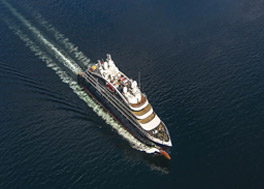
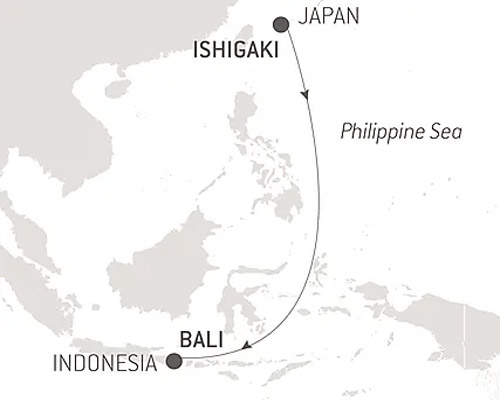
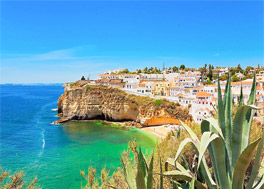
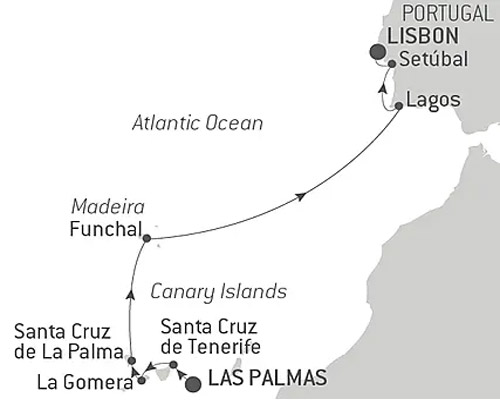
![8 Days - Scenic Alaska [Vancouver to Juneau] 8 Days - Scenic Alaska [Vancouver to Juneau]](/images/packages/Scenic-Cruising-Canadian-Inside-Passage1.jpg)
![8 Days - Scenic Alaska [Vancouver to Juneau] 8 Days - Scenic Alaska [Vancouver to Juneau]](/images/packages/extraimages/1472_7Days-Scenic-Alaska160721.jpg)
![8 Days - Scenic Alaska [Juneau to Vancouver] 8 Days - Scenic Alaska [Juneau to Vancouver]](/images/packages/Vancouver-BC.jpg)
![8 Days - Scenic Alaska [Juneau to Vancouver] 8 Days - Scenic Alaska [Juneau to Vancouver]](/images/packages/extraimages/8649_7Days-ScenicAlaska230721.jpg)
![7 Days - Scenic Alaska [Juneau to Vancouver] 7 Days - Scenic Alaska [Juneau to Vancouver]](/images/packages/extraimages/1071_7Days-Scenic-Alaska20072023.jpg)
![10 Days - Alaskan Splendors [Seward [Anchorage] to Vancouver] 10 Days - Alaskan Splendors [Seward [Anchorage] to Vancouver]](/images/packages/Misty-Fjords-Alaska.jpg)
![10 Days - Alaskan Splendors [Seward [Anchorage] to Vancouver] 10 Days - Alaskan Splendors [Seward [Anchorage] to Vancouver]](/images/packages/extraimages/347_10Days-Alaskan-Splendors01092021.jpg)
![10 Days - Alaskan Splendors [Vancouver to Seward (Anchorage)] 10 Days - Alaskan Splendors [Vancouver to Seward (Anchorage)]](/images/packages/Sitka-Alaska-USa.jpg)
![10 Days - Alaskan Splendors [Vancouver to Seward (Anchorage)] 10 Days - Alaskan Splendors [Vancouver to Seward (Anchorage)]](/images/packages/extraimages/1031_10Days-Alaskan-Splendors27072023.jpg)
![11 Days - Alaskan Splendors [Vancouver to Seward (Anchorage)] 11 Days - Alaskan Splendors [Vancouver to Seward (Anchorage)]](/images/packages/Haines-alaska.jpg)
![11 Days - Alaskan Splendors [Vancouver to Seward (Anchorage)] 11 Days - Alaskan Splendors [Vancouver to Seward (Anchorage)]](/images/packages/extraimages/7543_11days-Alaskan-Splendors28032023.jpg)
![Odyssey in the heart of Japan's subtropical islands[Osaka - Keelung] Odyssey in the heart of Japan's subtropical islands[Osaka - Keelung]](/images/packages/Odyssey-in-the-heart-of-Japan.jpg)
![Odyssey in the heart of Japan's subtropical islands[Osaka - Keelung] Odyssey in the heart of Japan's subtropical islands[Osaka - Keelung]](/images/packages/extraimages/9836_Osaka-Keelung.jpg)
